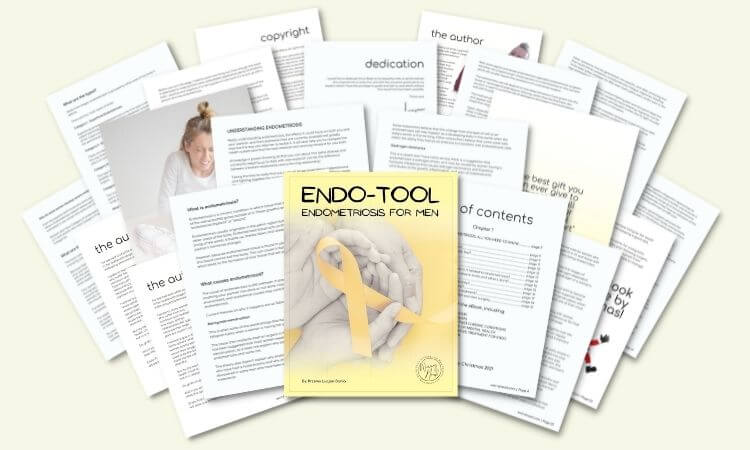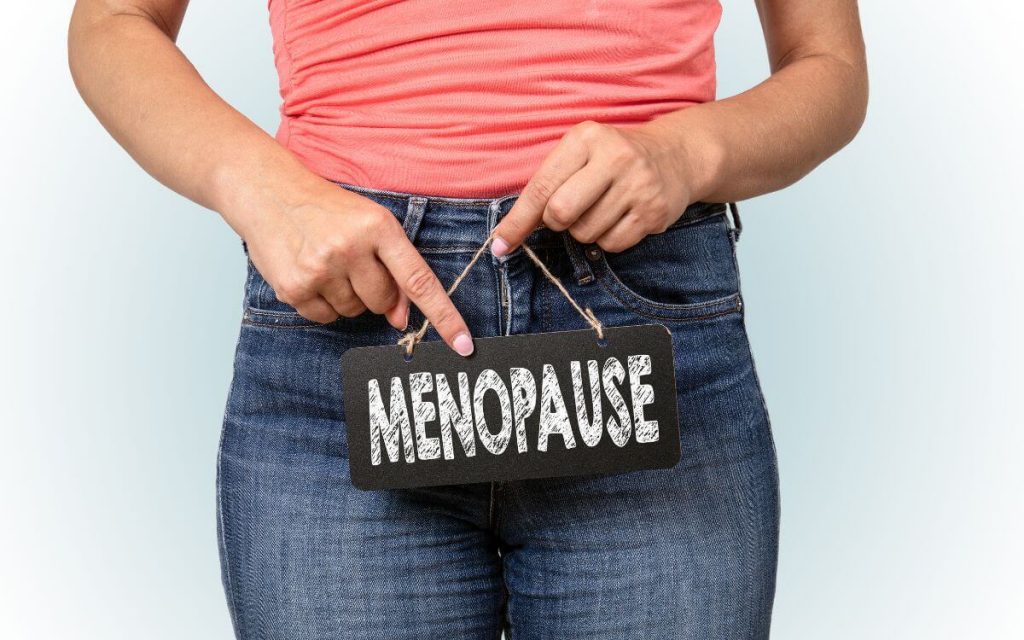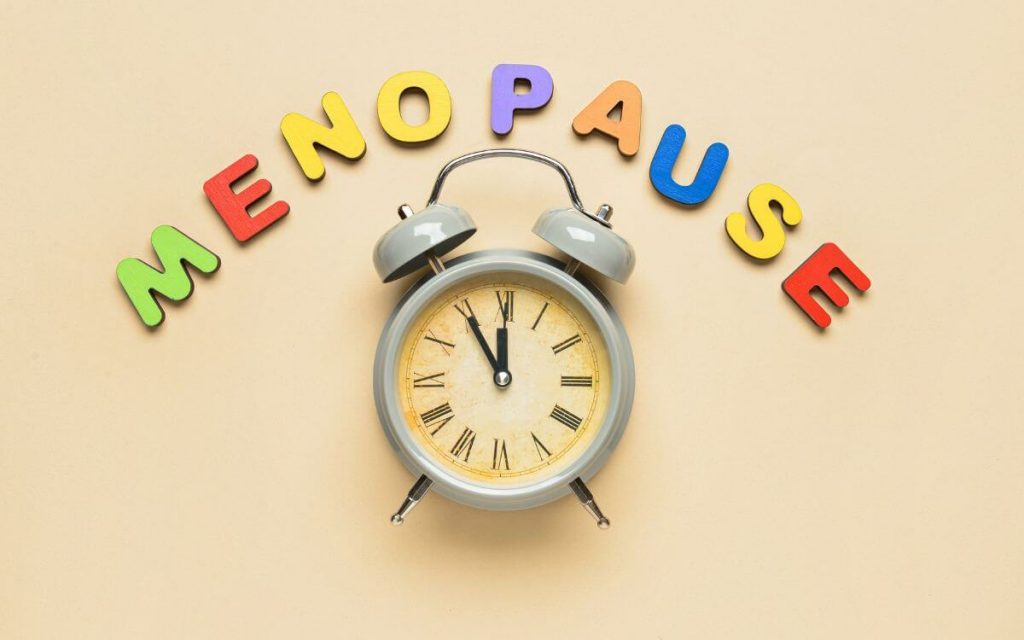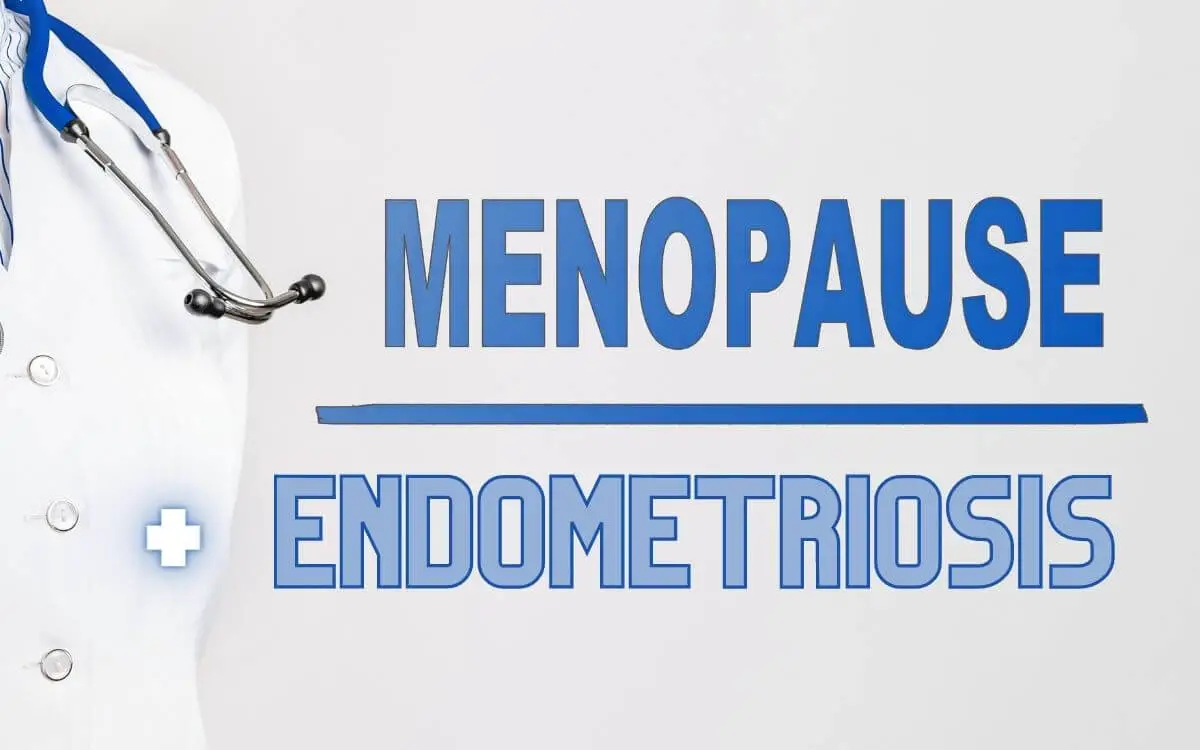What happens to endometriosis before and after menopause?
Currently, as I write this blog post, my wife enters her perimenopausal stage. She’s in her late-40s and is beginning to experience perimenopausal symptoms. With this new stage of life comes a number of questions concerning endometriosis, its relation to menopause, and how to manage postmenopausal endometriosis in the best possible way.
Being husband to a woman who suffers from stage 4 extensive pelvic endometriosis and fibromyalgia disorder, I wanted to help my wife with her endometriosis and menopause. I wanted to learn the difference between perimenopausal and postmenopausal women.
In order to do that, I had to find answers to the questions my wife continuously asked herself, including:
- Is endometriosis associated with early menopause?
- Does endometriosis get worse before menopause?
- Does endometriosis regress after menopause?
- Does endometriosis pain go away after menopause?
- At what age does endometriosis go away?
- Does endometriosis get worse with menopause?
- Does endometriosis affect the age of menopause?
- Are there any treatments for menopausal endometriosis?
- Are there any treatments for postmenopausal endometriosis?
- Let's start with the basics…
- What happens to endometriosis after menopause?
- The types and stages matter!
- Is endometriosis associated with early menopause?
- Does endometriosis get worse before menopause?
- Does endometriosis regress after menopause?
- Does endometriosis pain go away after menopause?
- At what age does endometriosis go away?
- Does endometriosis get worse with menopause?
- Does endometriosis affect the age of menopause?
- Are there any treatments for menopausal endometriosis?
- Are there any treatments for postmenopausal endometriosis?
- Postmenopausal endometriosis.
- Induced menopause.
- Hormone replacement therapy.
- Can you have endometriosis after menopause if you’ve never had endometriosis?
- What are the potential complications of endometriosis after menopause?
- What is postmenopausal intestinal obstructive endometriosis?
- Conclusion.
Let’s start with the basics…
When it comes to endometriosis and menopause, it’s important that you know the basics. You may already know most of it, however, for those who don’t, I suggest not skipping this section because I give you all the basics of endometriosis and menopause by answering the following:
- What is endometriosis?
- What causes endometriosis?
- How is endometriosis diagnosed?
- What are the symptoms of endo?
- What is the treatment for endo?
- How can you manage endometriosis?
- What is menopause?
- What are the menopausal symptoms?
- What happens to endometriosis after menopause?
What is endometriosis?
Endometriosis occurs when the tissue that is similar (endometriosis lesions) to one that lines the uterus (endometrium) grows outside of the uterus.
The endometrium is a type of tissue that typically grows inside the uterus, where it bleeds during menstruation. With endometriosis, this tissue is found outside of the uterus and can cause pain, heavy bleeding, and even fertility problems.
I’ll discuss more of the endo symptoms very soon. Firstly, you need to know what causes this diabolic condition to occur in the first place…
If you want to learn more about endometriosis, I wrote an “Endo-Tool, Endometriosis for Men” e-Book.
You can get the 1st Chapter of the e-Book for FREE, and if you like it, you’ll get a Whopping 33% Discount on the Whole Book, plus discounts on other helpful tools. You have nothing to lose but a lot to gain!
The first chapter alone contains all the comprehensive medical knowledge about endometriosis, including:
- What is endometriosis?
- What are the symptoms?
- What causes endometriosis?
- What does endometriosis look like?
- What are the stages?
- What are the types?
- What is adenomyosis and how is it related to endometriosis?
- Why do some women develop severe endo and others don’t?
- Does endometriosis cause infertility?
- How is endometriosis diagnosed?
- Do types and stages affect the treatment?
- Recurrence of endometriosis after excision surgery.
FREE Chapter of “Endo-Tool”
Endometriosis e-Book for Men

What causes endometriosis?
The exact cause of endometriosis remains unknown, however, there are many theories as to what could be causing it.
Some of these include genetic factors, changes in hormones associated with menstrual cycles, retrograde menstruation (when menstrual blood flows back up into the pelvic area), immune system dysfunction, and environmental factors.
When it comes to genetic factors, the NSPR1 gene (known as neuropsin) has been linked to the development of endometriosis.
Changes in hormones that are associated with menstrual cycles can be partly responsible for the development of endometriosis lesions. Estrogen, progesterone, and other hormones can all cause the condition to develop or worsen.
Retrograde menstruation is a common theory that is believed to cause endometriosis. During this process, menstrual blood flows back up into the pelvic area instead of flowing out. When this occurs, some of the menstrual blood can end up on tissues outside of the uterus.
Immune system dysfunction is another possible cause of endometriosis. People with weakened immune systems tend to be more prone to developing the condition.
Finally, environmental factors are also believed to be responsible. Exposure to certain chemicals or toxins can increase the risk of developing endometriosis.
Now that you know some of the causes, let’s discuss the diagnosis of endometriosis…
How is endometriosis diagnosed?
Diagnosis of endometriosis is done with a physical exam and medical history. Some diagnostic tests used to diagnose endometriosis include an ultrasound, pelvic MRI, or CT scan. However, to truly diagnose this chronic condition, a biopsy needs to be taken during diagnostic surgery.
This surgery is called “laparoscopy” because a lighted viewing device called “laparoscope” is inserted through a small incision in the abdomen. This allows for a visual inspection of the organs and tissues inside the pelvic area.
Now, let’s move on from the diagnosis of endometriosis to the symptoms associated with this chronic disease…
What are the symptoms of endo?
There are pretty common and also less common symptoms of endometriosis.
Common symptoms can include chronic pelvic pain (especially during menstruation), heavy menstrual bleeding, painful periods, painful ovulation, abdominal cramps, back pain, leg pain, and fatigue.
Less common symptoms, however, not uncommon can include bloating, constipation, diarrhea, painful urination, infertility or difficulty becoming pregnant, and pain during sexual intercourse.
I put painful sex in the less common symptoms because not all women develop more advanced stages of endo, and many of them may not experience pain during penetration. It all depends on the placement of endometrial tissue.
Lastly, I would be wrong if I didn’t mention anxiety and depression, but however these belong to more common symptoms or rather consequences of living with endometriosis, OCD (Obsessive-Compulsive Disorder) is rather rare.
Many women experience the former (anxiety and depression) but the latter (OCD). Unfortunately, my wife’s endometriosis and fibromyalgia caused her to develop Obsessive-Compulsive Disorder.
What is the treatment for endo?
Treatment of endometriosis includes medication to treat pain and inflammation, hormonal replacement therapy to slow down or stop ovulation and reduce the size of endometriosis lesions, as well as surgical procedures like laparoscopic surgery to remove lesions.
The best course of action will depend on the severity of endometriosis, individual symptoms, and whether there is an ovarian cancer risk in the family history of endometriosis or cancer.
It is important for you to know that the best approach is a combination of medical, surgical, and holistic approaches to treatment. I expand on the latter in the next paragraph…
How can you manage endometriosis?
I mentioned a holistic approach to treatment because to manage endometriosis in the best way possible, you (or your partner) will have to make some general lifestyle changes.
Such changes include maintaining a healthy weight, exercising regularly, getting enough sleep, reducing stress levels, avoiding alcohol and caffeine consumption, and eating a balanced diet can help to improve symptoms associated with endometriosis.
Additionally, alternative therapies like acupuncture or yoga may be beneficial in some cases. So, to summarise this in easy-to-remember bullet points, to holistically manage endo symptoms at home, you should consider the following:
- avoid stress (common trigger)
- maintain a healthy weight
- eat a balanced diet
- exercise regularly
- get adequate sleep
- avoid sugar, dairy, and alcohol

What is menopause?
Menopause is defined as the permanent cessation of menstrual cycles due to the age-related decline of estrogen production by the ovaries. It typically occurs between 45-55 years of age, however, it can occur earlier or later depending on various factors.
Menopausal women may experience physical and psychological symptoms which I am about to explain next…
What are the menopausal symptoms?
Common menopausal symptoms include:
- hot flashes
- night sweats
- dryness or irritation
- difficulty sleeping
- decreased libido or desire for sex
- fatigue and exhaustion
- irritability or mood swings
- anxiety or depression
Other issues women may experience during menopause include:
- joint pain and stiffness
- thinning hair
- skin changes
What happens to endometriosis after menopause?
When it comes to endometriosis after menopause, the disease recurrence is possible for postmenopausal women because endometriosis is estrogen-dependent.
Estrogen levels tend to decrease after menopause, but hormonal replacement therapy will build more estrogen, even though there is not as much of it during the premenopausal phase. This means that postmenopausal endometriosis may still occur even though the levels of estrogen are lower.
Estrogen production does not stop completely, and endometriosis is still possible in postmenopausal women, so the disease recurrence is pretty common.
The types and stages matter!
When it comes to endo, regardless if it’s peri or postmenopausal endometriosis, the severity of its symptoms will always colorate with the type and stage of the condition.
When it comes to the types of endometriosis, there are four stages:
- Minimal
- Mild
- Moderate
- Severe
Stage 1 – Minimal endometriosis, which is the mildest form. It usually involves small lesions or superficial endometrial implants on the ovaries and other pelvic organs.
Stage 2 – Mild endometriosis where lesions may be more extensive but are still limited to the reproductive organs. This stage can cause significant pain and disruption of menstrual cycles, as well as infertility if left untreated.
Stage 3 – Moderate endometriosis (pelvic endometriosis) in which lesions have spread to the rectovaginal septum or other pelvic structures, including the bowel or bladder. Symptoms at this stage may include severe pelvic pain, excessive bleeding, and infertility.
Stage 4 – Severe endometriosis where lesions have spread beyond the reproductive organs and may be found on other structures such as the lungs, intestines, kidneys, or muscles. Symptoms in this stage are usually more severe and may include chronic pain and infertility.
When it comes to the types of endometriosis, there are also four types:
- Peritoneal endometriosis
- Ovarian endometriomas (chocolate cysts)
- Deep infiltrating endometriosis I (DIE I)
- Deep infiltrating endometriosis II (DIE II)
Peritoneal endometriosis – this is the most common type and is characterized by small lesions on the surface of the uterus, ovaries, or other pelvic organs.
Ovarian endometriomas – also known as chocolate cysts, are fluid-filled sacs that grow on the ovaries and can cause severe pain.
Deep infiltrating endometriosis I – this type is characterized by lesions that have grown deep into the pelvic cavity involving organs such as the bladder, rectal area, or intestines (also known as deep pelvic endometriosis).
Deep infiltrating endometriosis II – it’s a type of endo characterized by lesions that have grown outside of the pelvic cavity and may include the bowels, appendix, diaphragm, heart, lungs, or even brain.
FREE Chapter of “Endo-Tool”
Endometriosis e-Book for Men

Is endometriosis associated with early menopause?
In premenopausal women, endometriosis is not typically associated with early menopause. It usually occurs in women of reproducing age and usually subsides after menopause. However, endometriosis can develop in postmenopausal women and its symptoms can be similar to those of menopause.
However, some studies have suggested that endometriosis may influence the age of menopause by a few years.
Does endometriosis get worse before menopause?
To answer this question, we must look at the stages of endometriosis because stage I is when endometrial tissue is found outside the uterus and has not spread to other organs, while stage IV deep infiltrating endo is when endometrial tissue has spread to many organs and causes severe pain.
In general, endometriosis tends to get worse before menopause.
Symptoms may increase in severity, especially as ovarian hormone production declines during perimenopause. Endometriosis is less likely to get worse after menopause because the hormones that help it grow, such as estrogen, are no longer produced in high amounts.
Can it regress after menopause? Let’s take a look…
Does endometriosis regress after menopause?
Yes, endometriosis after menopause can regress due to declining hormone levels and resulting in lower levels of inflammation.
This seems like good news to my wife and all the women suffering from this chronic disease because its symptoms tend to ease after menopause.
However, there is still a lot of research that needs to be done to understand the effects of postmenopausal endometriosis on women.
Overall, endometriosis is a chronic and progressive disease but its effects can be managed through lifestyle modifications and medical interventions. It is important to take a holistic approach to treatment because this will determine the best ways of managing endometriosis after menopause.
Finally, it is important to remember that postmenopausal endometriosis can still be a difficult condition to manage and it is important that postmenopausal women speak with their doctor about the best treatment options. This will help ensure that they receive the best care possible.
Does endometriosis pain go away after menopause?
For many women, their symptoms improve or even disappear completely once they enter the postmenopausal phase.
So, similarly to what I mentioned above in relation to the regression of endometriosis after menopause, the pain associated with this illness may also diminish or even go away completely.
However, each case is different and it is important to speak with a specialist doctor before making any decisions about treatment or lifestyle modifications.

At what age does endometriosis go away?
It doesn’t.
The age of menopause is typically between 45 and 55 years old, so postmenopausal women can expect to experience a decrease in symptoms, but endo will never go away.
You must remember, that there is no cure for endometriosis that we know of today. While there are treatments that can help manage symptoms (surgical or hormonal treatment), endometriosis will never completely go away.
Therefore, it is important to take a holistic approach to endo management throughout life, especially during the postmenopausal phase. This will help to ensure that symptoms remain manageable and progress of the illness can be slowed.
Does endometriosis get worse with menopause?
The answer to this question is – it depends. It depends on how severe postmenopausal endometriosis is, and on the individual, the environment, and the circumstances.
But I’d say – not necessarily – while it may get worse initially due to hormonal fluctuations, many postmenopausal women report that their symptoms improve or even disappear once they enter the postmenopausal phase.
During menopause, some women experience a decrease in endometriosis symptoms as the body stops producing hormones like estrogen which help the disease to grow. Other women may experience an increase in symptoms.
Ultimately, each case is different, and what my wife will experience may not be the same as other women.
Does endometriosis affect the age of menopause?
Studies have suggested that endometriosis may influence the age of menopause by a few years, but more research is needed to confirm this.
The age of menopause can vary from person to person. On average, it occurs between the ages of 45 and 55, but some women may experience menopause earlier or later.
Although endometriosis may have an effect on the timing of menopause, it is important to remember that it does not cause menopause. Menopause is a natural process that happens due to a decline in hormones.
Are there any treatments for menopausal endometriosis?
Does the treatment of endometriosis differ before, during, and after menopause?
Yes, the treatment of endometriosis can differ before, during, and after menopause. Generally speaking, non-surgical treatments such as hormone therapy and certain medications are most effective prior to menopause.
After menopause, endometriosis-associated symptoms may diminish or disappear, and the focus of treatment then shifts to managing symptoms through lifestyle modifications. However, if symptoms persist, postmenopausal women may benefit from alternative treatments such as physical therapy, acupuncture, or even surgery.
It is important to consult your doctor about the best treatment options.
The most common treatment is hormone therapy, which works by reducing the amount of estrogen in the body and thus relieving symptoms such as pain, heavy bleeding, and inflammation.
Other options include surgery or some form of alternative medicine (such as acupuncture).
Are there any treatments for postmenopausal endometriosis?
I briefly mentioned this above…
Hormone therapy is still an option for postmenopausal women, but it may not be as effective due to lower levels of estrogen in the body during significant postmenopausal endometriosis.
Surgery can also be considered if other treatments are ineffective.
Additionally, lifestyle measures such as maintaining a healthy weight, exercising regularly, getting adequate sleep, and managing stress levels may be beneficial.
The use of alternative therapies such as acupuncture is also becoming increasingly popular among postmenopausal women with endometriosis. These treatments can help to reduce symptoms such as pain and improve the overall quality of life.
Postmenopausal endometriosis.
Let’s explore more postmenopausal endometriosis (endometriosis after menopause) and how this impacts postmenopausal women…
Postmenopausal endometriosis occurs in the same way as for perimenopausal women when tissue similar to the lining of the uterus is found outside of it. Postmenopausal endometriosis can be also found on the ovaries, fallopian tubes, bladder, and rectal area, depending on the stage and type of endo.
The symptoms of postmenopausal endometriosis will not include periods, as they have stopped, however other symptoms may include some amount of pain and fatigue, although not to the same extent as they would for perimenopausal women.
Symptoms include discomfort, pelvic chronic pain, various digestive problems, nausea, diarrhea, or even constipation. In some women, postmenopausal endometriosis may appear in the same way as menopausal symptoms, and that includes hot flashes.
In some cases, postmenopausal endometriosis can worsen existing symptoms, although this is not always the case.
Induced menopause.
When it comes to induced menopause, it’s a form of treatment that uses medical interventions to stop the menstrual cycle and reduce hormones in order to alleviate the symptoms associated with endometriosis.
Induced menopause is usually only recommended in severe cases, and it may be done before or after natural menopause.
The procedure involves the use of drugs that stop the production of hormones and thus reduce the activity of endometriosis in postmenopausal women.
Induced menopause can be a very effective treatment for postmenopausal endometriosis, but it also comes with certain risks and side effects – including depression, sexual dysfunction, and osteoporosis.
It is important to discuss the risks and benefits of induced menopause with your doctor before making a decision about this treatment option.
Hormone replacement therapy.
In some cases, hormone replacement therapy (HRT) may be an option for postmenopausal endometriosis. This can help to reduce the symptoms and increase a woman’s quality of life.
HRT involves taking synthetic hormones in order to replace the body’s natural supply of hormones. The goal of HRT is to reduce the amount of estrogen in the body and thus reduce endometriosis symptoms such as pain and inflammation.
Hormone replacement therapy can be effective in reducing postmenopausal endometriosis symptoms, but it also comes with certain risks and side effects – including an increased risk of stroke, heart attack, and breast cancer or ovarian cancer.
It is important to discuss the risks and benefits of hormone replacement therapy with your doctor before making a decision about this treatment option.
FREE Chapter of “Endo-Tool”
Endometriosis e-Book for Men

Can you have endometriosis after menopause if you’ve never had endometriosis?
Yes, it is possible to have endometriosis after menopause if you’ve never had endometriosis before. This is because endometriosis is the presence of endometrial-like tissue outside of the uterus, which can occur at any age.
If you experience any symptoms of endometriosis after menopause, it’s important to speak with your doctor if you experience any symptoms that may be related to endometriosis, such as pelvic pain or heavy menstrual bleeding. Your doctor should help you to determine the best course of treatment.
What are the potential complications of endometriosis after menopause?
It’s important to treat endometriosis after menopause because the condition can continue to spread.
The condition can develop years after your periods’ stop, therefore the potential complications of endometriosis after menopause may include the following:
- pain during intercourse
- bowel obstruction or urinary tract obstruction
- ascites (accumulation of fluid in the abdomen)
- intestinal obstructive endometriosis
- risk of breast or ovarian cancer
- pelvic pain
- inflammation
The risk factors for each postmenopausal patient may be induced by hysterectomy surgical menopause due to estrogen replacement therapy, and these risk factors include breast cancer, ovarian cancer, endometrial cancer, and also brings thyroid cancer risk.
What is postmenopausal intestinal obstructive endometriosis?
Intestinal obstructive endometriosis after menopause can occur if the endometriosis has spread to the intestine and obstructs it giving various intestinal symptoms. Symptoms of intestinal obstructive endometriosis may include abdominal discomfort, nausea, vomiting, and changes in bowel habits.
Intestinal obstructive endometriosis is a serious condition that requires immediate treatment. It may include surgical removal of the endometriosis and hormone therapy.
Conclusion.
Postmenopausal endometriosis is a condition that can occur if the endometriosis has spread to other parts of the body after menopause. It is important to discuss the risks and benefits of any treatment options with your doctor before making a decision.
Hormone replacement therapy or induced menopause may be an option, but they both come with certain risks and side effects.
Furthermore, intestinal obstructive endometriosis is a serious complication associated with postmenopausal endometriosis that requires immediate treatment. Therefore, it is important for postmenopausal women to talk to their doctors about any signs or symptoms of endometriosis that they experience in order to receive appropriate treatment.
The symptoms before, during, and after menopause can be caused by a range of health conditions and it is important for postmenopausal women to seek medical advice if they experience any concerning symptoms.
When it comes to postmenopausal endometriosis, early diagnosis and treatment can help reduce the symptoms and increase a woman’s quality of life. Therefore, it is important for women to speak to their doctor about any symptoms that may be related to endometriosis.
Endometriosis can have serious complications, it is important to seek medical attention early if you experience any concerning symptoms. Your doctor can help you determine the best course of treatment for your individual case and ensure that you receive appropriate care.
My wife is just entering her perimenopausal stage. It is important for all women, especially those entering the perimenopausal stage, to take steps to reduce their risk of endometriosis. Some tips you can pass along to your wife include:
- Maintaining a healthy lifestyle and weight.
- Eating a balanced diet with plenty of fruits, vegetables, and whole grains.
- Exercising regularly.
- Taking steps to reduce stress.
- Avoiding exposure to environmental toxins.
- Quitting smoking, if applicable.
It is also important to discuss any symptoms or concerns with her doctor and get regular gynecological check-ups. This can help catch endometriosis early and allow for more effective treatment. Early diagnosis is key for reducing the risk of complications associated with endometriosis.


About Me
Hi, I’m Lucjan! The reason why I decided to create this blog was my beautiful wife, who experienced a lot of pain in life, but also the lack of information about endometriosis and fibromyalgia for men…
